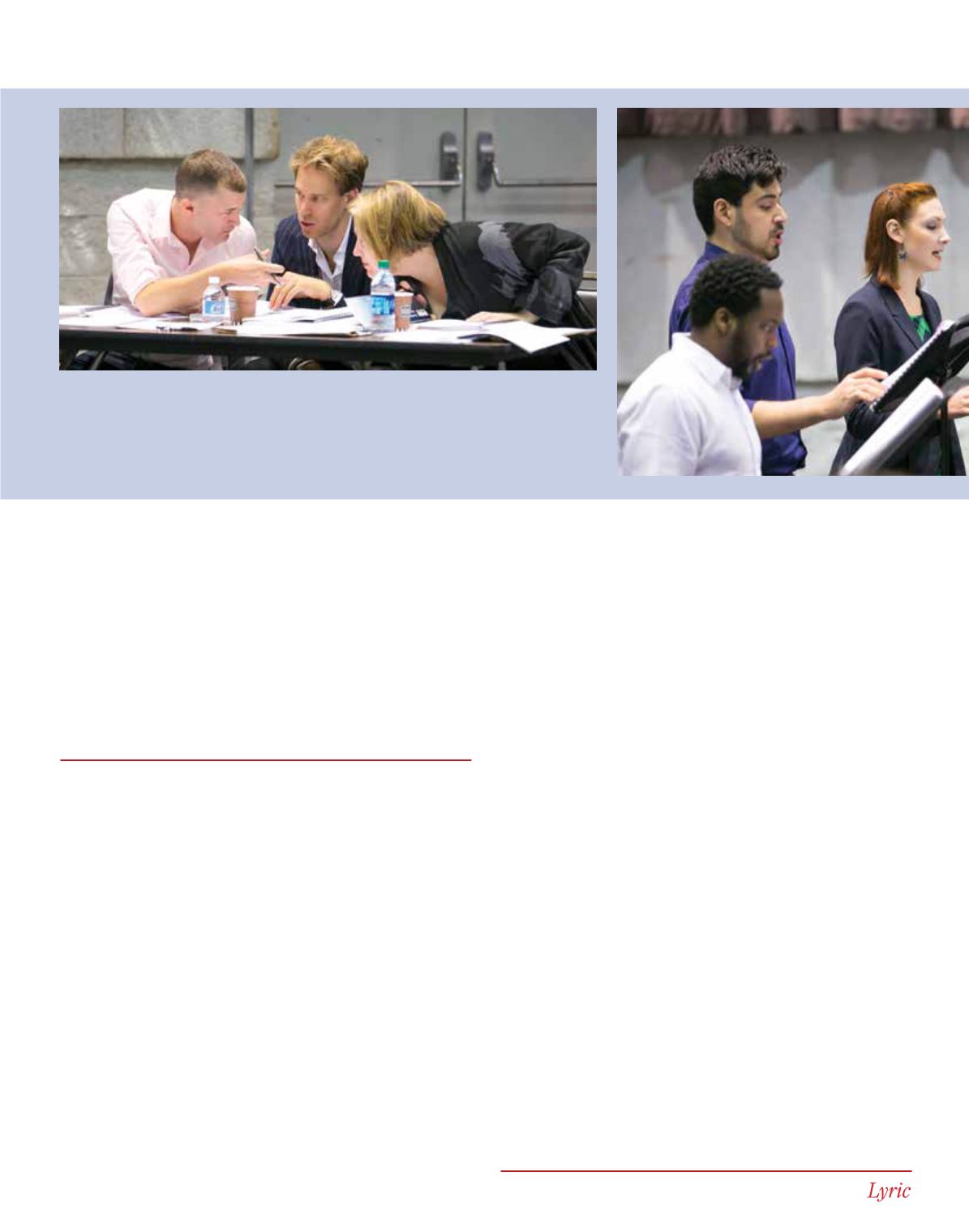

L Y R I C O P E R A O F C H I C A G O
36
|
December 7, 2015 - January 17, 2016
We discovered a lot about tempi; I would say I was slightly
worried that a particular tempo might be harder to execute certain
phrases based on where they sit in the voice, and someone would
theorize, “If we put it at a more ‘moving’ tempo, how would
it sound?” Music is something to be interpreted! Even though
Jimmy and Nilo had set out their thoughts, we were all able to
share our interpretations, and it really made the creation of the
role feel tailor-made. To have the whole team working so meticu-
lously was fantastic.
KEVIN NEWBURY,
director
What is most satisfying to you in working on new pieces?
It is an honor to animate a story for the first time and I love
working with living composers and librettists. There is noth-
ing like having the writers in the room to collaborate with on
all aspects of the production. I began working with Jimmy and
Nilo on
Bel Canto
very early on in the process and it’s been a
pleasure having a role in shaping the piece. We have worked
together adapting the novel, incorporating details but the actual
historical event and making the piece live as music theater.
What speaks most strongly to you in the opera’s dramatic content?
Essentially,
Bel Canto
is about what happens when one hundred
people from entirely different walks of life are trapped in the same
space for four months. What does it mean to be a hostage? A ter-
rorist? How to people form a community even in the most trying
of circumstances? And, perhaps most importantly, what is the
role that music can play in bringing together a group of people
that don’t speak the same actual language.
What draws you to it as a director?
The action never stops. It’s a propulsive story with rich charac-
ters. Directing one hundred performers whose characters speak
nine different languages is an exciting challenge. There are a lot
of split scenes, arias and big ensembles and, unlike most operas,
no one ever leaves the stage. The opera vacillates between public
and private moments. I have enjoyed finding ways to get into
each character’s head -- both dramatically and visually -- within
this pressure-cooker environment where no one is ever alone. The
opera begins very naturalistically and then becomes more height-
ened and theatrical as characters lose track of themselves and try
to remember their lives outside the mansion, to remember what
brought them there in the first place. The “color of the journey,”
as Nilo writes, is different for each character and the experience
over four months changes them forever.
What made the Chicago workshop so valuable?
The whole team got to be in the same room to hear the piece,
make changes and work through important moments. It's crucial
to have a chance a year before rehearsals to see how characters
were coming through, how vocal lines were reading. It allowed
us – especially Jimmy and Nilo – to make changes, and for all of
us to figure out how we want to tell this story.
A bit part of my job is determining how we make transi-
tions from scene to scene. If Jimmy has written 10 measures of
beautiful music, I might need 20. I might say, “Can you double
this? Can we extend it so I have more time to get us from place
to place” Or it could be the opposite: “This interlude is gorgeous,
but I don’t think we need quite that much to get to the next phase
of the story.” All those things get discussed in a workshop.
The creative team was present when scenes from
Bel Canto
were performed by the Ryan Opera
Center in a workshop at Lyric in July 2014. Pictured here are (left photo) director Kevin Newbury,
set designer David Korins, and costume designer Constance Hoffman; (middle photo) Ryan Opera
Center artists Will Liverman, Richard Ollarsaba, Julie Miller, Laura Wilde, and John Irvin;
and (right photo) Ryan Opera Center pianist Maureen Zoltek, director of music administration
Thomas Young, and Ryan Opera Center music director Craig Terry.
















